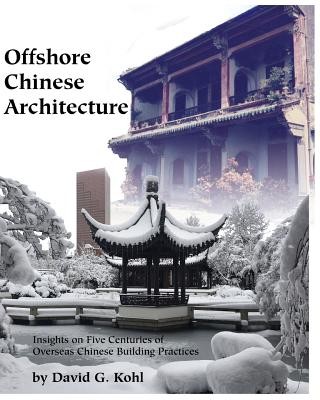
- We will send in 10–14 business days.
- Author: David G Kohl
- Publisher: CreateSpace Independent Publishing Platform
- ISBN-10: 1724829009
- ISBN-13: 9781724829009
- Format: 20.3 x 25.4 x 1.9 cm, softcover
- Language: English
- SAVE -10% with code: EXTRA
Reviews
Description
Temples, shophouses, mansions, kongsis and gardens are unique architectural forms produced by generations of Chinese peoples living in locales as diverse as Singapore, San Francisco, Macao, Penang, Djakarta, Melbourne, and Amsterdam. Since the days of East India Companies, sojourning Chinese laborers and merchants have established themselves to create offshore communities in far-flung ports of Asia, North America, and The Pacific Rim.What are the common elements visible in the built environment of these settlers? What factors brought about the richly ornamented temples and clan houses? Why were commercial buildings in Malaya such a dominant part of the British colonial streetscape while a Spartan style materialized in the communities of the gold fields and railway cities of California? What cultural heritage from the Canton region is universally evident in the Chinatowns of Liverpool, Mexicali, and Sacramento? Why are Chinese gardens being built in Malta, Los Angeles, and Portland?Offshore Chinese Architecture gives insights to these questions utilizing illustrations of source buildings in China, through historic and geographic research, and the observations and insights of scholar, teacher, and traveler David G Kohl. Viewing buildings on three continents, he offers insights into styles, similarities, and trends while noting the distinctly different situations of the overseas Chinese in the nanyang (SE Asia) and gumshan (America and Australia).Profusely illustrated with historic and contemporary drawings. Structure, ornamentation, and symbolism are explained with diagrams, floor plans, elevations and historic woodcuts. Rare photos document construction stages of a Chinese garden. An illustrated field guide is included for use when visiting Chinatowns, religious buildings, and classical Chinese gardens.
EXTRA 10 % discount with code: EXTRA
The promotion ends in 20d.11:29:18
The discount code is valid when purchasing from 10 €. Discounts do not stack.
- Author: David G Kohl
- Publisher: CreateSpace Independent Publishing Platform
- ISBN-10: 1724829009
- ISBN-13: 9781724829009
- Format: 20.3 x 25.4 x 1.9 cm, softcover
- Language: English English
Temples, shophouses, mansions, kongsis and gardens are unique architectural forms produced by generations of Chinese peoples living in locales as diverse as Singapore, San Francisco, Macao, Penang, Djakarta, Melbourne, and Amsterdam. Since the days of East India Companies, sojourning Chinese laborers and merchants have established themselves to create offshore communities in far-flung ports of Asia, North America, and The Pacific Rim.What are the common elements visible in the built environment of these settlers? What factors brought about the richly ornamented temples and clan houses? Why were commercial buildings in Malaya such a dominant part of the British colonial streetscape while a Spartan style materialized in the communities of the gold fields and railway cities of California? What cultural heritage from the Canton region is universally evident in the Chinatowns of Liverpool, Mexicali, and Sacramento? Why are Chinese gardens being built in Malta, Los Angeles, and Portland?Offshore Chinese Architecture gives insights to these questions utilizing illustrations of source buildings in China, through historic and geographic research, and the observations and insights of scholar, teacher, and traveler David G Kohl. Viewing buildings on three continents, he offers insights into styles, similarities, and trends while noting the distinctly different situations of the overseas Chinese in the nanyang (SE Asia) and gumshan (America and Australia).Profusely illustrated with historic and contemporary drawings. Structure, ornamentation, and symbolism are explained with diagrams, floor plans, elevations and historic woodcuts. Rare photos document construction stages of a Chinese garden. An illustrated field guide is included for use when visiting Chinatowns, religious buildings, and classical Chinese gardens.


Reviews